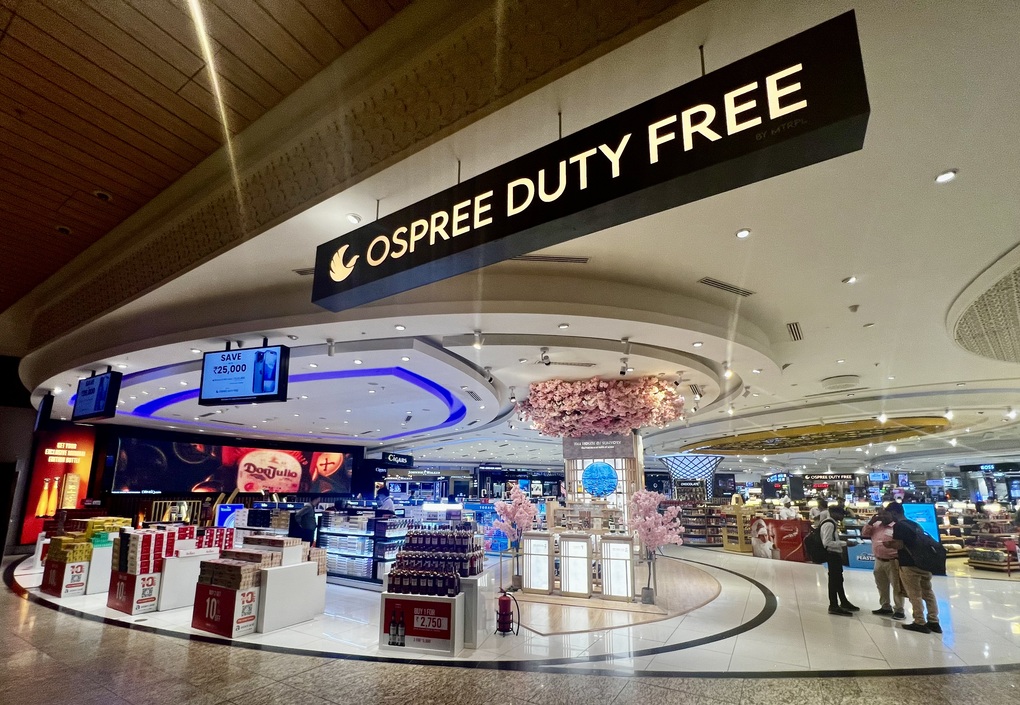JAPAN. 2004 is shaping up as a “˜banner year’ for Japanese outbound tourism, according to leading travel industry publication Travel Journal International Online (TJI).
For the first seven months, travel out of Japan was ahead +33.5% over the same period last year and +0.9% above the first seven months in 2002.
China and South Korea are the two destinations driving the business most. The boom in travel to these two destinations is expected to help travel from Japan match or surpass the level of 16.5 million seen in 2002 “when no major global events created havoc on international tourism”, TJI added.
It said: “Japanese wholesalers see China as their “˜Golden Egg’ in boosting sales and demand from a year ago” when SARS forced Japanese consumers to stay at home rather than go abroad.
Major wholesalers such as Jalpak and ANA Sales & Tours have each worked hand in hand with their group airlines – Japan Airlines (JL) and All Nippon Airways (NH) – in promoting travel to China. Since last September, wholesalers and airlines have been pushing travel to China hard, taking advantage of the 15-day visa free programme introduced by the Chinese government.
The Japanese travel industry has been promoting travel to China using Shanghai and Beijing as anchor gateway cities to other Chinese destinations. A big push has been to attract female consumers in the 30-50 age bracket with gourmet cuisine and relaxation as the centerpiece of the tours with small groups of friends.
Airlines have also added new services to take advantage of the return of business travel, TJI said. For example, Air China will begin service to Shenzhen by expanding its present Narita/Shanghai route with a connection to Shenzhen to keep pace with the rise in corporate travelers. And China-based Hainan Airlines last week began a twice-weekly service to Haikou from Kansai Airport.
With a concerted push from wholesalers, airlines and international hotel chains in China, traffic to China could reach 3 million this year, surpassing the all-time high of 2.8 million. Already the count till the end of July is up +11.7% from the record 2002 level. The number of Japanese that have visited China in the first seven months of this year has reached 1.7 million.
South Korea back on the rise
The rise of women travelers in their 30s, 40s and 50s to South Korea is helping bring travel to Japan’s near neighbour back to the forefront again after a three-year downturn.
Travel to South Korea in the first seven months of this year was ahead +38.2% to 1.3 million, +3.1% from two years ago.
While most Asian destinations are boasting double-digit increases in Japanese visitors from a year ago, many of them are behind the pace seen in 2002, TJI said. The Philippines (+11.9%) and Sri Lanka (+34.4%) are two countries that are well ahead of 2002 levels.
Here are some other highlights:
– The North American market has returned with travel to the US (including Hawaii and Guam) surging +36.2% through June to 1.8 million.
– Demand for the beach destinations of Hawaii (+20.9% to July) and Guam (+34.5% to August) has helped ignite overall traffic for US destinations. Compared to 2002, Hawaii is ahead by +1.8% while Guam trails by -4.2%.
– The US mainland is ahead +13.2% from 2002, underscoring its popularity among FITs and lifted by stepped-up promotions of Fly-and-Drive programmes and travel beyond gateway cities such as Los Angeles, Orlando, New York and Las Vegas.
However, TJI warned that it remains unclear how the requirements that Visa Waiver traveler passports contain biometric identifiers such as an electronic eye or fingerprint scan will impact traffic from Japan beginning in October.
– Travel to Canada, badly affected by SARS last year, has rebounded, up +52.1% through June, with traffic climbing +0.5% from 2002 levels.
– European destinations appear to be doing better this year, compared to both 2003 and 2002. Austria (+16.3%), Denmark (+9.7%), Germany (+0.9%), Spain (+6.8%), Croatia (+54.8%), Iceland (+49.8%), Hungary (+2.4%), the UK (+21.4%) and the Czech Republic (+33.5%) are all ahead of 2002 levels.
Middle East and North Africa growth
– Long-haul destination Egypt is well ahead, posting a +77.2% rise through May, with the count some +88.5% up from 2002. Traffic to the country will gain further as EgyptAir will boost its frequency between Kansai Airport and Cairo and introduce a new service to Luxor from Kansai Airport from 1 November.
– Meanwhile, Dubai continues to become one of the fastest-rising destinations for both business and leisure, driven by the new daily service from UAE carrier Emirates. The demand for travel from Japan to Dubai is being fueled mainly by small-sized incentive tours for VIPs and young women seeking a resort experience and great shopping.
– Elsewhere, long-haul destinations are benefiting from the demand for visits to World Heritage sites. Hungary, Croatia and the Czech Republic are countries that have strongly promoted tours centering on culture and history, mainly aimed at senior travelers.
– The beach resorts in the South Pacific are posting solid gains to date, led by Fiji (+20.2%) and Tahiti (+17.3%). Mostly attracting honeymooners and women travelers, the beach resorts are edging closer to 2002 levels with Tahiti up +3.4%. New Caledonia (-2.5%), Palau (-3.2%) and Fiji (-4.7%) can expect stronger gains during the fall wedding season, TJI said.
– Travel to Oceania has climbed by double-digit levels in the first half of 2004. The Mariana Islands handled 224,498 Japanese visitors through July, up +27.7% from a year earlier and some +21.6% ahead of 2002.
– Australia and New Zealand are on the verge of matching visitor levels seen in 2002, with traffic in 2004 ahead by double-digit levels on 2003. Australia (-2.4% from 2002) has strengthened its marketing efforts this year, focusing on the so-called “˜New 50s’ or active baby boomers, women’s market and family travelers. Tourism Australia recently introduced “˜Ian Thorpe’s Selection – Let’s Play in the Ocean; Four Australias’ tours suggested by the Olympic swimmer. It centered on four major destinations in Australia: Perth, Cairns, the Gold Coast and Sydney. Thorpe is the tourism ambassador to Japan.
– New Zealand (behind -2.6% from 2002) continues to post increased arrivals from Japan thanks to its “˜100% New Zealand’ promotions and the ongoing popularity of “˜The Lord of the Rings’ movie series.
TJI concluded: “Amid the promotions by various national tourist offices in Japan and by those of the airlines and travel agencies, there are key issues that come into play in how well outbound traffic in 2004 will grow.
“These include consumers’ sense of security in overseas travel, in safety and health concerns and in their confidence in job security and financial well-being amid Japan’s economic rebound.”
Note: The Moodie Report works closely with Travel Journal International Online, which is the pre-eminent provider of information on the Japanese travel industry. It’s a service that deserves industry support. To subscribe, please click here.
MORE STORIES ON JAPANESE TRAVEL
Japanese travel heads towards 2000 levels – 30/08/04
Japanese become increasingly FIT to travel – 30/08/04
ANA Sales predicts 100,000 extra Japanese tour group visitors to China in 2005 – 23/08/04
JAL, ANA traffic rises but still lags behind 2000 – 04/08/04
Japanese first-half travel edges past 2002 levels – 02/08/04





